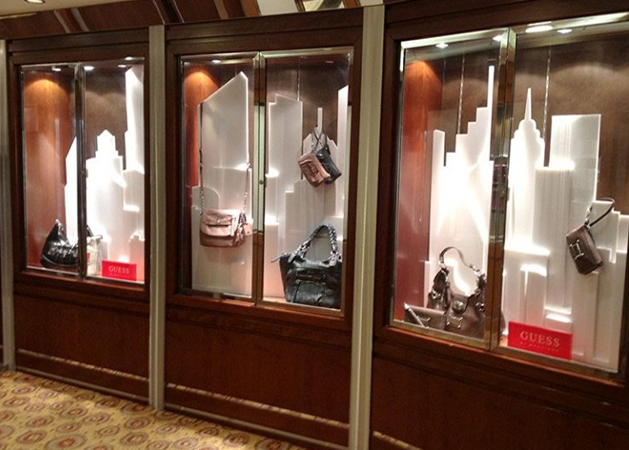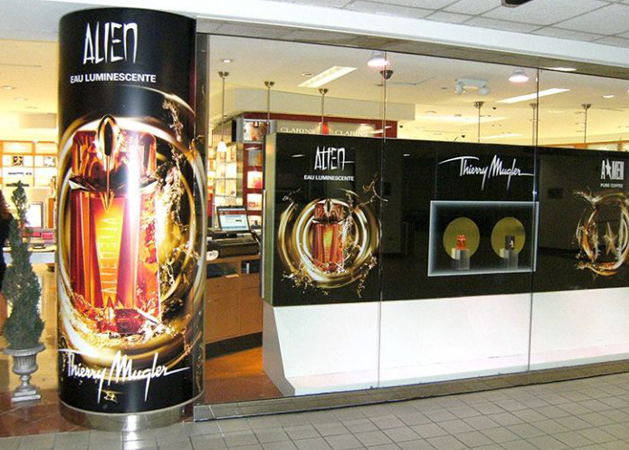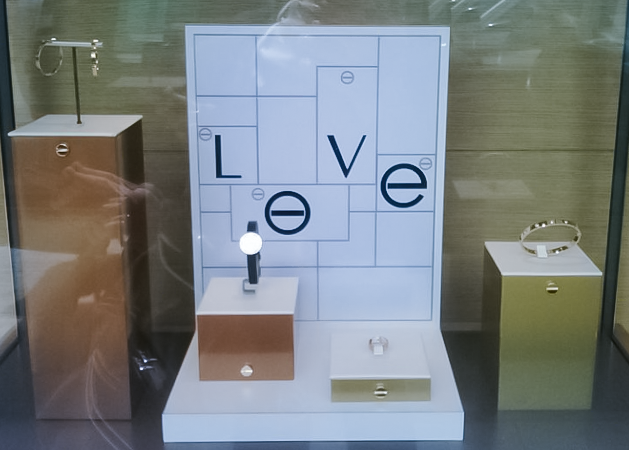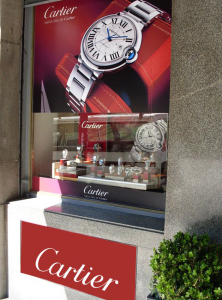Window shopping is a time-honored tradition that began during the Gilded Age—an era of economic growth and industrialization. Building technology and the introduction of plate glass in the mid to late 1800s were game changers for shopkeepers. They would fill their windows with the latest fashions and must-have items. Fast forward to 2023; the only change is how store owners showcase their merchandise.
Even though e-commerce is booming, 94% of customers still shop in physical stores, making storefront signage a key element. Store window displays remain an invaluable tool for showcasing products in their best light. An effective, eye-catching, and unique window display can help draw customers into the store, boost sales, and reinforce branding. This is especially important for smaller boutique stores that may not have the advertising dollars to compete with bigger retailers. With some simple tips and guidelines, you can design a display for retail stores that stands out and generates excitement.



How To Create An Engaging Retail Window Display
Retailers use window displays to highlight new arrivals or seasonal collections, but it’s also an opportunity to get creative in showing off the individual product and the brand’s personality. Strategic lighting, bold visuals, and incorporating large format graphics like window graphics, props, and backdrops are just a few ways store owners can up the ante to entice shoppers into the store for a closer look.
Types of Window Displays
The first step in the retail graphics design process is deciding what type of window display is best for the product. There are several types to choose from, each with its own advantages. The type you choose depends on several factors, such as store location, window size, product type, and budget.
Open Window Displays
The open window display features products against an open backdrop, allowing the shopper to see past it and into the store. These usually include mannequins and body forms, or they can showcase products using retail display tables, shelving, and platforms. Because there is no screen or wall, hiding fixture accessories or wires is difficult. You also need to keep retail displays within view of the window tidy.
Closed Window Displays
Unlike open window displays, the closed window display is completely boxed in with a backdrop, screen, or wall. This provides more opportunities to create detailed scenes and full brand experiences while also hiding wires, lights, and other accessories. The depth of a closed retail window display is only limited by the space the retailer is willing to dedicate.
Semi-Closed Window Display
Semi-closed retail window displays are a great mix of both concepts. This allows shoppers to focus on the products on display while limiting the view of the store from the outside. Depending on the design or the size of the product you’re showcasing, you can use a low wall or platform set to half the window’s height or hang a backdrop halfway from the ceiling.
Shadow Box Window Displays
A shadow box retail window display is usually reserved for smaller windows. These box-like displays sit in recesses and promote intimacy with the shopper. Retailers often use shadow box window displays for smaller items like jewelry, fragrances, or cosmetics.
Corner Window Display
Corner window displays take advantage of two street views. The angled space and wrap-around visibility make these retail window displays optimal focal points of the building. They can be open, closed, or semi-closed, depending on the design and the product. Corner window displays need to look good from every angle. So, make sure you carefully plan your creative design before installing the display.


5 Steps For Designing Retail Window Displays
Once you’ve nailed down the budget, product, and type of window display, now the fun begins! Whether you hire a visual merchandising professional or decide to DIY, you need to plan out every aspect, starting with measuring the size of your window. Then follow these five steps for designing a retail window display that will stop shoppers in their tracks.
- Start with a Story or Theme. Build the display around a central story or theme that reflects the brand’s identity or message. Think of the tone you’d like the window display to convey. For example, a lifestyle brand may pose mannequins as if they’re using or enjoying the product or show the product in action. This step is especially fun for holiday retail ideas like Christmas window displays or Halloween window displays.
- Create a Focal Point. The product is the focus but not necessarily the focal point. A focal point is a central point within the visual presentation. This could be bold lighting, colorful graphics, intriguing retail props or decor elements—anything that draws a customer’s eyes to the product.
- Keep it Simple Yet Bold. A retail window display design doesn’t have to be big and bold to be effective. It can be bold without being loud or busy. Including too many competing products, colors, props, signs, or graphics can create visual clutter that overwhelms the viewer. Instead, highlight the most important elements that support the theme.
- Balance Size, Shape and Color. Proper balance means taking into account the size, shape, and color of your display for retail stores. You want to feature elements of various heights and dimensions for visual interest. Also consider incorporating repeating brand colors, shapes, or materials that help tie the window display idea to the product. And remember, contrasting colors can make key items in the display pop.
- Light Your Display Effectively. If you can’t see the product, then the window display is not effective. However, the lighting doesn’t have to be boring. You can use a mix of ambient lighting and directional spotlights to create focal points or hide features (especially if it’s an open window display). Backlighting, neon, and colored lights can also create drama. No matter what lighting style you choose, you still want to make sure your product is easily visible.
Types of Graphics For Retail Window Displays
Several types of graphics are effective for creating a unique retail window display. You can use small, medium, or large format graphics depending on the size of your window and the space you want to dedicate within the store. Visually appealing and creative retail graphics can support the theme and act as a focal point. Here are some popular examples:
- Window decals and stickers: Adhesive graphics that can be applied to the window surface featuring product logos, images, brand messaging, or decorative elements.
- Window clings: Non-adhesive window graphics that can be easily moved and repositioned.
- Perforated window film: Allows graphics to be printed on one side while maintaining visibility from the other. It is often used for large-scale visuals designed to cover the entire window.
- Window posters and banners: These are specially-designed large format prints that cover most of the window, though you can have multiple smaller posters. They can also be printed on various materials, such as vinyl or fabric.
- Backlit graphics: These are printed on translucent materials and illuminated from behind to create a dynamic visual effect in the window.
- SEG graphics: These edgeless or frameless graphics can elevate the retail window design by giving it a modern and sophisticated feel. They sometimes include a lighted element.
- Vinyl, fabric, or mesh backdrops: These are typically used for semi-open, closed, and shadowbox window displays and help provide a background for the scene.
Next Level Retail Window Displays
You’ve got the basics down. Now it’s time to think outside of the box. There are a few digital tools you can incorporate that can help your retail window display stand out and engage customers in a highly unique way. Shoppers are used to interacting with technology daily, so it makes sense to add digital elements to enhance the experience. Here are some popular ideas that can help create an immersive environment.
- Digital screens – Small or large, video screens can display dynamic and eye-catching content such as product videos, brand messaging or support the theme of the display window.
- Augmented Reality (AR) – Several websites already use AR, such as home improvement stores. It allows a customer to virtually try on a product or experience some element of it.
- Touchscreens – These are interactive digital screens that shoppers can use to browse products or learn more about the product.
- QR codes – Shoppers often have their phones in hand. Adding a QR code to your window display can allow them to scan and quickly access product information, brand messaging, or even sales and discounts.
Let Color Reflections Design Your Next Retail Window Display
A good retail window display can turn heads. A great retail window display gets people talking! An effective retail window display immediately attracts, engages, and informs shoppers. Color Reflections has been designing, printing, shipping, and installing custom displays for retail stores for more than 50 years. Our team has the design knowledge and printing expertise to help elevate your retail window display, retail merchandising displays, and storefront signage. Contact our team for a quote today.
The post Your Guide To Designing A Retail Window Display appeared first on Large Format Printing & Event Graphics.
